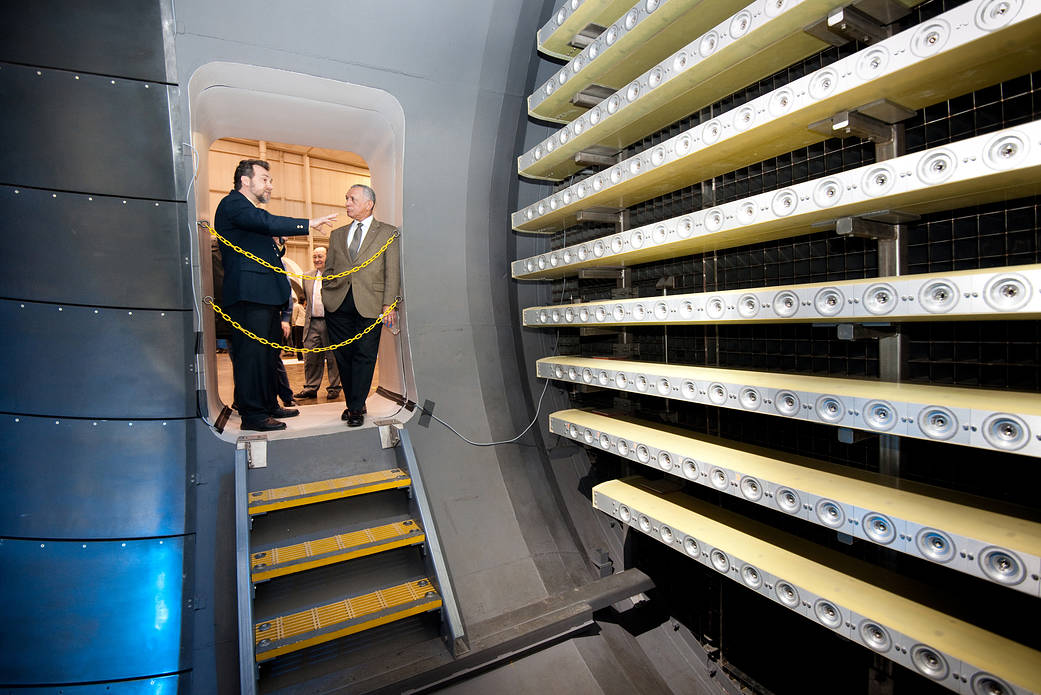
Ron Colantonio (left), manager of the Atmospheric Environment Safety Technologies Project at NASA’s Glenn Research Center in Cleveland, explains to NASA Administrator Charlie Bolden during a February 2012 visit how a large horizontal array of spray bars will emit a cloud of ice crystals in high-altitude, low pressure conditions that match those an airliner might experience in flight.
NASA scientists are mounting a research campaign using flight and ground tests to solve a modern-day aviation mystery involving the seemingly strange notion that ice crystals associated with warm-weather storms can be ingested into the core of a hot jet engine, melt and then re-freeze. As larger amounts of ice build up, some of the ice can break off and cause damage inside the engine, or melt and cause the engine to lose power or shut down altogether in a flameout.
Part of the research effort involves using the spray bars to simulate the icing conditions in engines on the ground at the Propulsion Systems Laboratory at Glenn. Eventually, a full-scale engine will be mounted opposite the bar array.
It is expected that data from this research effort will be used to update flight safety rules to increase safety in an aviation system that already is the safest in the world. Data also will be used by engine manufacturers to make engines less vulnerable in ice crystal conditions.› Read More

























